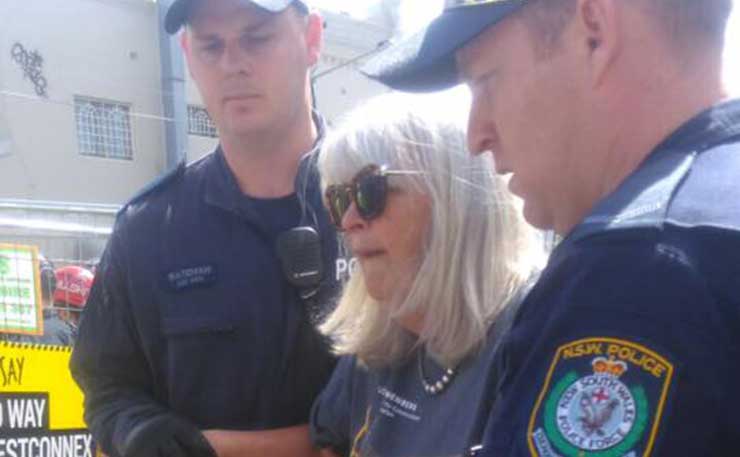New Matilda contributing editor Wendy Bacon was recently arrested and charged with trespass, as part of her ongoing protests against a massive Sydney tollway project. Here, she explains the arrest, and looks back on the battles that have long raged in Sydney against developers and their mates in government.
Last Friday morning I set out early to join about 35 other residents at a small peaceful protest against the 34 kilometre Westconnex tollway.
Nearly all the other protesters were women, quite a few of them like me in their 60s. I was certainly not expecting to be arrested, pushed into a paddy wagon and taken to Newtown Police Station, where I spent most of the day.
It is not the first time that I have found myself unexpectedly in a cell. During the 1970s, I was arrested on a few occasions although my criminal record is so old that it was expunged long ago.
Locked up for seven hours, I had time to reflect on past experiences as well as my current predicament. There were some obvious differences.
Back then, we were eight or 10 to a cell, with wooden boards to sit on, a toilet in the corner and a solid metal door with a small hatch through which police occasionally peered.
Today, two of us sat in a much smaller cell with a glass door, under constant police surveillance. The shared toilet was private.
Beyond these details, I thought too about the connections between our current battles and those of the 1970s, when a mass movement of residents fought to protect Sydney’s bushland, heritage buildings and inner Sydney communities as places where low-income residents might continue to live.
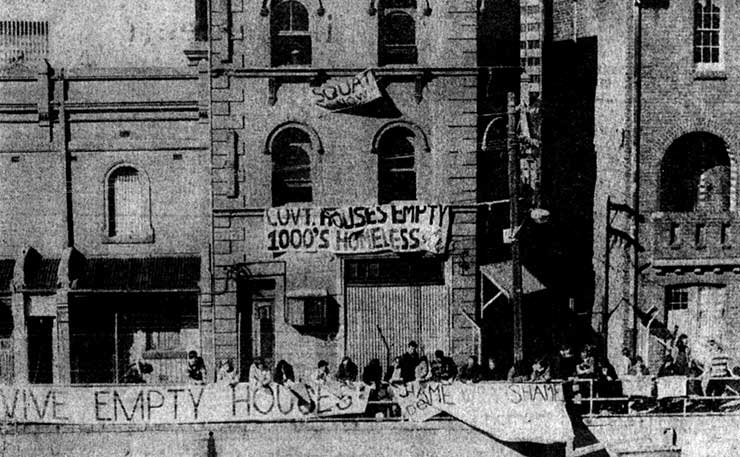
Property developers backed by the then Askin Coalition government wanted to raze to the ground whole swathes of Sydney to make way for office blocks and apartments that those on low incomes would never be able to afford.
The NSW Department of Roads was pursuing its dream to build an expressway through Glebe. Community action backed by Green Bans imposed by the NSW Builders’ Laborers’ Federation and crane drivers’ union (now both part of the Construction, Forestry, Mining and Energy Union or CFMEU) eventually stopped much of this development in its tracks.
Now 40 years later, I’m part of the campaign against Westconnex that is taking the homes of thousands of people as well as prized parkland and trees for a massive road project that independent experts say will saddle Sydneysiders with decades of tolls without solving traffic congestion.
But as in the 1970s, this fight is just one of many local battles. Residents of North Parramatta are fighting to protect public community facilities and the nationally significant Female Factory precinct. Further West nearer Penrith, residents who already live with uncontrolled odours are ignored when they campaign against more waste facilities.
At Windsor, protesters have maintained a camp to save an invaluable heritage bridge from another short-sighted NSW government road plan.
On the eastern edge of Sydney, residents are fighting to save the Bondi Pavilion as a community resource. The government is destroying iconic trees along Anzac Parade and nearby roads without any clear explanation as to why an alternative route for a new light rail route cannot be found.
Communities and housing activists are fighting to protect low income housing in Redfern, Waterloo and Millers Point in Inner Sydney.
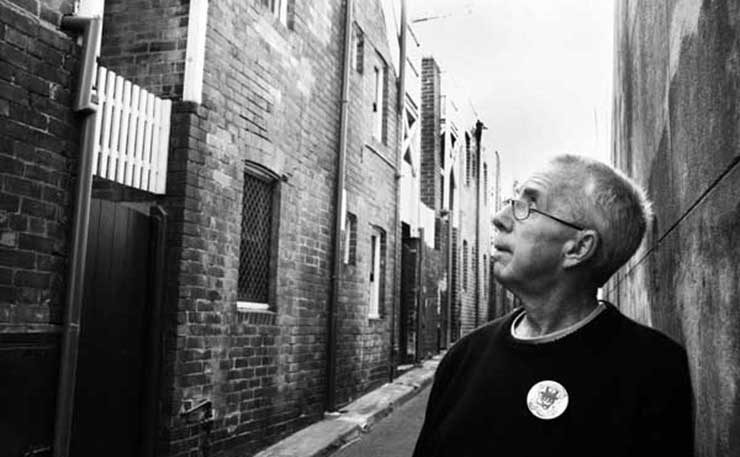
A few weeks ago, I attended a meeting of Aboriginal people who talked with sorrow about how their community is being displaced from Redfern. While not all were born there, they had grown up believing Redfern was an exciting and historic place of struggle where Aboriginal people would always find a welcome.
There was also the notorious sweetheart deal with casino king Jamie Packer for a multi-storey high roller casino on Darling Harbour that seeks to exploit very rich Chinese businessmen wanting to gamble, perhaps launder some dollars.
There have been a series of scandals around mismanagement of Crown Lands which instead of leading to ‘reform’ could lead to a major sell off of public land.
The Baird government also has plans to weaken protection of biodiversity and to gut laws that restrict land clearing, although over 75 per cent of the public oppose these changes.
Earlier this year, the Baird government abolished and sacked democratically elected municipal councils, including three in Sydney’s Inner West that opposed the Westconnex. Despite a new gerrymander giving businesses a double vote designed to defeat City of Sydney Lord Mayor Clover Moore, she and an independent team were swept back to power.
The City remains resolutely opposed to the massive Westconnex tollway system and wants to take back some of its old planning powers over the Rocks, Darling Harbour and Pyrmont.
The City of Sydney is also supporting the battle to save the Sirius building, erected in the late 1970s to replace publicly owned housing already lost in the Rocks. I recently joined a Save Sirius rally where I recognised community activists from Parramatta, Bondi and the Stop Westconnex campaign. There were also a host of students in architecture and other disciplines.
I caught up with Jack Mundey who, now in his mid-eighties, is an elder of the environmental movement. A retired member of the CFMEU, he has been instrumental in achieving a green ban on the Sirius building.
Today, he is a hero, but in the early 1970s, he and his fellow NSW Builders’ Laborers union officials were vilified by the right-wing media for imposing green bans on this and many other areas.
The day of our small Newtown protest was two days short of 43 years since I was arrested in Sydney’s Rocks with about 70 other people including Mundey. Word had gone out that bulldozers were moving in to break the union ban and residents from The Rocks, Millers Point and other resident action groups peacefully occupied one big building to prevent work.
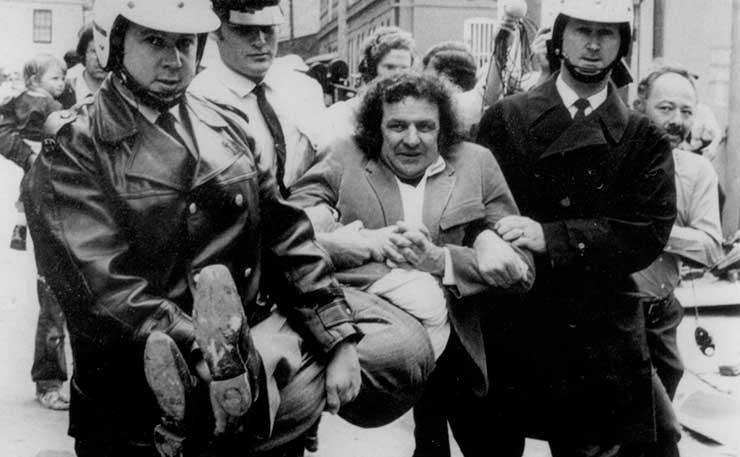
I still have a clear memory of Nellie Leonard, a small feisty woman with flaming red hair, who had come across from her home in Woolloomooloo to support the people of The Rocks. I am not sure how old she actually was but I saw her as quite old. I remember being surprised that a woman of her age would be prepared to get arrested.
Today, as my own generation approaches Nellie’s age, it doesn’t seem surprising at all. At several protests against Westconnex, I chatted with Ray Harrison, an old acquaintance and lifelong campaigner, now in his mid nineties.
His daughter Paula Rix was one of four women recently arrested occupying a now demolished heritage home in an area devastated by the first stage of Westconnex.
In 1975, Paula Rix and I were part of a group of young women who occupied an empty Glebe house for a working women’s centre.
Just after the battle for The Rocks, I was arrested again in Victoria Street Kings Cross in early 1974. All leave had been cancelled for NSW Police who gathered en masse at dawn outside the notoriously corrupt Darlinghurst Police station to coordinate a raid on about 10 huge terraces that had been occupied by squatters for six months.
Again residents and friends came from all over Sydney to join the protest.
King Cross bouncers arrived in trucks and used sledge hammers to force their way into houses, some of which had been protected by scaffolding erected by builders labourers during their summer holidays.
Police again arrested scores of protesters and charged us with being in a building ‘without reasonable cause’.
The Greens bans and community action saved many buildings, parkland and some low-income inner-city housing.
In 1976, the Wran Labor government was elected and finally stopped the expressway forcing its way through Glebe.
Planning laws were put in place that provided the community with stronger public interest protections and more rigorous evaluation of development. But these gains were always under pressure from gentrification, corruption and the property development industry that continued to have a powerful role in NSW politics.
In the mid-1980s, the late Justice Jim McClelland told me that he believed the NSW planning law was already being undermined by corruption.
The LNP government was elected in 2011 on an anti-corruption platform but behind the scenes, prominent Liberals courted millions of dollars of property developer donations that the NSW Greens had successfully campaigned to make illegal.
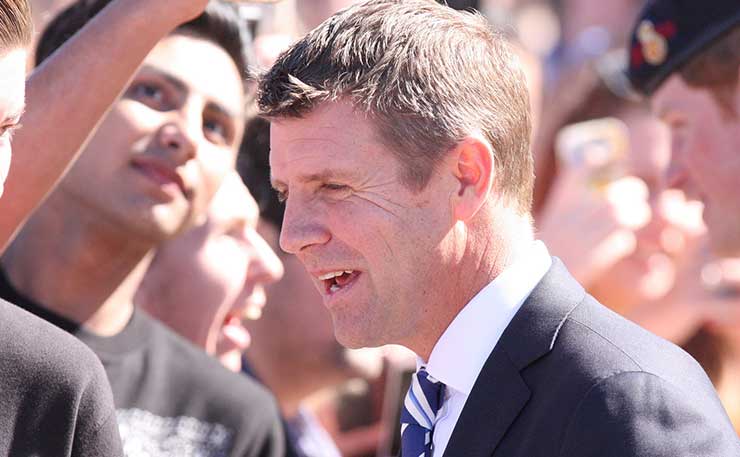
Once elected, the new government promptly acted to entrench the influence of property developers to an extent not seen since the 1960s.
Instead of the stronger role in planning for local communities and the strengthening of public resources across Sydney, we are now faced with the wholesale transfer of public decision-making and resources into private hands with no accountability to the public.
This brings me back to last Friday morning and our protest.
When we arrived in Holmwood Street, Newtown there was no sign of the publicly-owned private company, Sydney Motorway Corporation (SMC) that is responsible for planning and building the Westconnex tollway.
A private security guard and a few traffic controllers from a private company were the only sign that Westconnex work could be about to begin.
Most people living in the street had received no information about the drilling. A handful of residents and businesses had been notified of a four week drilling program intended to extract geological samples from the clay soils that residents say already cause instability in homes, some of which are more than 130 years old.
The drilling in Newtown is supposed to provide preliminary information for the Environmental Impact Statement for Westconnex Stage 3. You might be fooled into thinking that this is a reasonable step in a process to decide whether $7 billion Stage 3 tollway tunnels – stretching across the Inner West from Rozelle via a huge new portal in Parramatta Road near Sydney University to a massive spaghetti interchange at St Peters – makes good economic social and environmental sense.
But in fact, the key decision to build the tollway was made in 2012 by the NSW Cabinet on the recommendation of Infrastructure NSW.
Infrastructure NSW was then chaired by NSW Liberal ex-Premier Nick Greiner and dominated by private big business interests. The Baird government is already forcibly acquiring homes in Rozelle before the drilling is finished or the route for Stage 3 has even been announced.
There has never been a planning evaluation of the whole Westconnex. While the EIS process for Stages 1 and 2 did provide technical details, much of the thousands of pages of reports were window-dressing.
Expensive consultants supplied social and economic impact reports that relied mostly on demographic data and paid almost no attention to social and psychological impacts on affected communities.
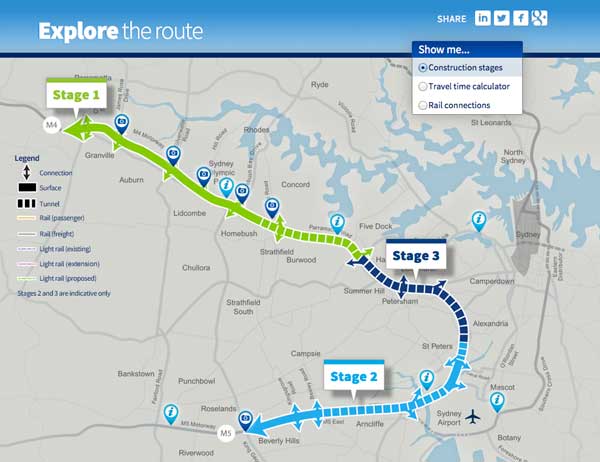
Other consultants within the closed world of the tollway industry used a single, confidential model to provide traffic analyses while pretending that other transport planning perspectives do not exist.
Heritage and flora and fauna consultants document losses but do not contest them.
The NSW Auditor General delivered a scathing report on an early Westconnex business case. After intense political pressure from Labor and the Greens, Premier Baird released a more advanced business case late last year that had so many crucial redactions that it was difficult to evaluate.
This business case for Westconnex was based on a report by a major private accountancy firm and was also subject to scathing critique by City of Sydney consultants, who argued that the economic benefits of Westconnex tollways were overstated.
Thousands of people signed a petition enabling local Greens MP Jenny Leong to initiate a parliamentary debate. Individuals, community organisations and local Councils submitted a record 12,000 submissions to NSW Planning objecting to the Stage 2 New M5. I was part of small team that published some of these submissions in the People’s EIS websites.
The NSW government has never provided City of Sydney with an explanation of where it plans for 63,000 extra cars to go after they pour into Inner Sydney with its rapidly increasing population. Nor has there ever been a serious comparative analysis of why other approaches to transport policy cannot be used to reduce traffic on major roads during peak hours.
Hundreds of arguments, including from independent transport researchers, were simply disregarded or rejected by AECOM (the company responsible for the EIS) and the NSW Department of Planning.
Government departments submitted criticisms but NSW senior public servants understand well that the ultimate decision to approve is simply not open to question.
Under the NSW ‘State Significant infrastructure’ planning process, the Minister has the power to simply declare a project such as Westconnex to be ‘critical’. The LNP government deliberately amended the NSW Planning Act so that there could be no legal appeal on a ‘critical’ project’s merits, even if there is evidence that the approval of state significant infrastructure relies on factually wrong considerations.
As New Matilda has previously reported, billion dollar contracts were granted before the EIS for Stages One and Two were even lodged. There have been no opportunites for public hearings.
Early last year, the Federal Coalition government devolved to the states its powers to inquire into projects that threaten critical plant and animal species. One of the planning processes approved was the NSW “State Significant infrastructure’ process.
This means that the Cooks River’s critically endangered Ironbark forest has already been destroyed, and a rare colony of Green and Golden Bell frogs is under dire threat.
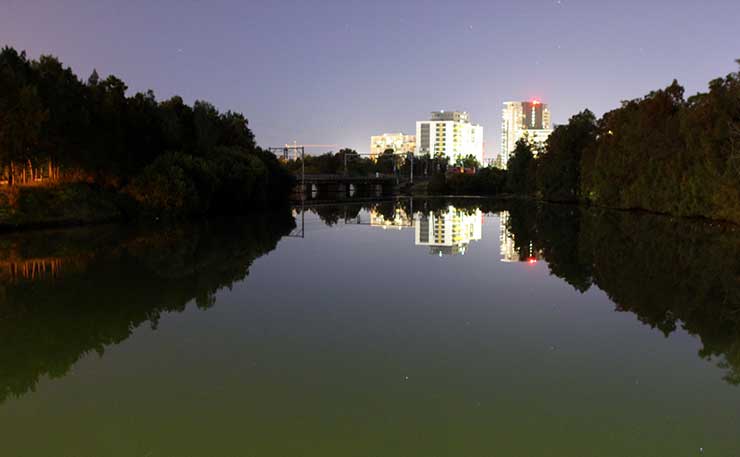
Approval conditions state that destruction can proceed so long as so-called ‘biodiversity offsets’ are purchased elsewhere, but nothing is finalised until long after the endangered species are gone.
The Planning process is simple – endangered species and heritage buildings can be destroyed because the government has decided to build a tollway. The balancing and evaluation of evidence that one would expect in a planning process has disappeared.
The NSW government and some media has deliberately fuelled the idea that there is a division of interests between the people of the Inner West who supposedly don’t care about the people of Western Sydney. I am not suggesting that there is no smugness in the Inner West, or that some of us are not privileged by owning homes that we could not now afford to buy. But I am yet to hear an anti-Westconnex activist disparage or dismiss the needs of Western Sydney.
Some, including my own family, grew up or have close relatives who live in Western Sydney.
While the government’s policies may be designed to make the inner city the preserve of wealthy residents and tourists, many residents are not rich, including most of Westconnex’s victims whom the NSW government now admits were treated unfairly.
Very few of those forced out of their homes can afford to buy or rent anywhere near where they previously lived.
St Peters resident Shelley Jensen lives on a fixed income, and she recently told the media on her last day in what had been her home that “I have lost my anchor.” She is now in temporary accommodation.
People in Western Sydney are also battling to protect their environment. Last year New Matilda reported on how thousands of kilos of Westconnex waste containing asbestos was dumped on an open landfill in Erskine Park near Penrith on the western edge of the city. Recently one of these residents sent me evidence that piles of asbestos-contaminated waste had been left lying on the M4 in Western Sydney for more than a year.
When I visited Erskine Park, I met with residents’ who were trying to fight a new waste dump, despite the fact that regulators have failed to control the odour from other existing waste dumps.
The NSW Planning Department received hundreds of submissions against the new facility and scheduled a hearing for the waste facility at a time when almost no-one could attend. The facility was approved.
The community in Sydney’s West also suffers from inadequate public transport planning and has little choice over whether to use congested and sometimes dangerous roads. These communities will be the hardest hits by the tolls that the Baird government is about to reintroduce on the old M4, and on all the new toll roads.
Last week, the Grattan Institute reported that major transport infrastructure projects built in the past 15 years cost $28 billion more to build than first promised.
It found the 24 per cent mark-up on the promised cost was largely due to premature announcement of projects before proper cost assessments were done, which is exactly what has occurred with Westconnex.
Costs of Westconnex have blown out from $10.5 billion to more than $17 billion. This figure does not include property acquistions, a number of which are being contested in court. The Financial Review has also reported that costs are blowing out for the contractors. This will give them an incentive to cut corners when operating away from the public gaze, which is most of the time.
As billions of public dollars continue to flow into Westconnex, the government plans to sell off long-term WestConnex concessions to private operators earlier than previously indicated. Every time it seems like the last tollway has been announced, the NSW government comes up with a new addition and change of route.
You could be forgiven for thinking Westconnex is a scam.
There can be no doubt that Westconnex is relentlessly pushing forward, but the government is so concerned about its bad reputation that it is to be re-branded as part of ‘Tomorrow’s Sydney’. That means millions more public dollars handed to public relations and advertising consultants to sell the project, while residents are kept in the dark about acquisitions and the location of portals, stacks and construction sites until after decisions are made.
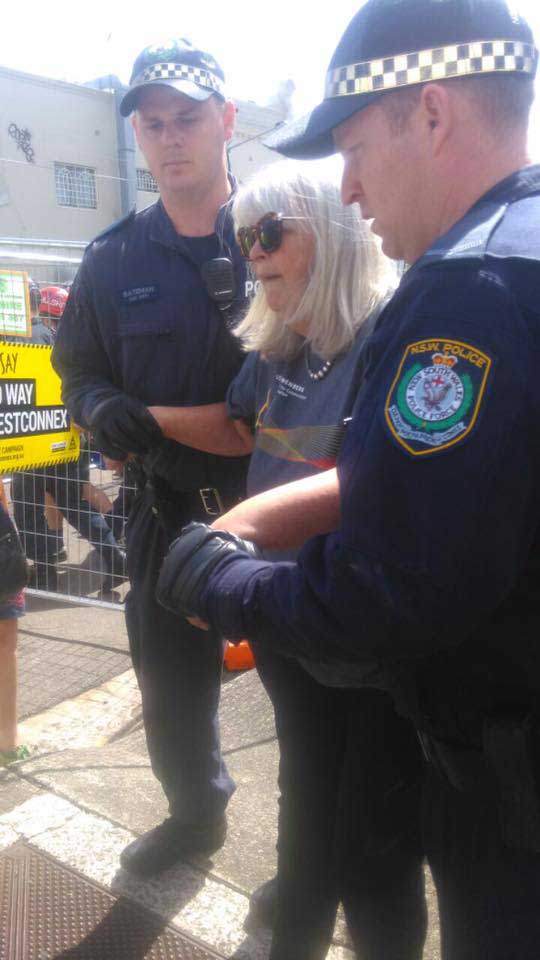
But back to last Friday and the unexpected arrests. No representatives showed up from the Sydney Motorway Corporation or Westconnex. Instead an AECOM engineer appeared.
For those who have been following New Matilda’s reporting on Westconnex, AECOM will be a familiar name. AECOM has paid nearly $500 million to settle lawsuits for misleading traffic projections in a project with Leightons (now CIMIC), the major beneficiary of Westconnex contracts to date.
Although they had recently been involved in failed tollways, these companies were invited to be part of the early planning of Westconnex.
AECOM was heavily involved in the EIS for Stages One and Two while it held contracts for other parts of the project. Long before its EIS was lodged, AECOM was promoting Westconnex on its website.
After a New Matilda story about AECOM, the promotion disappeared. The company has consistently refused to answer questions about its role in Westconnex.
At the protest, we asked the AECOM engineer to provide written authority that he was acting on behalf of the NSW government’s Roads and Maritime Services. He refused to do this.
Instead he and others erected a fence around us. The Newtown local police were called, who in turn called in heavier police, known in our community as the ‘riot squad’.
Along with two others, I was arrested and charged with ‘remaining on enclosed land’. A total of 13 people have now been arrested in protests against Westconnex.
An ambulance officer visited the police cells to examine and put plaster on the badly sprained wrist of one of my co-accused, caused by a police officer during the arrest.
We will plead not guilty to the charges when we appear in court on November 17. I will hold any detailed examination of these events until the court hearing, which is likely to be next year.
The upshot is that the drilling continues, but so do the protests. When democratic processes are undermined, decisions lose political legitimacy.
A poster of Baird labelled VANDAL that appeared on the streets last week reflects a building anger and frustration. When other options are systematically cut off, non-violent protest is an important option.
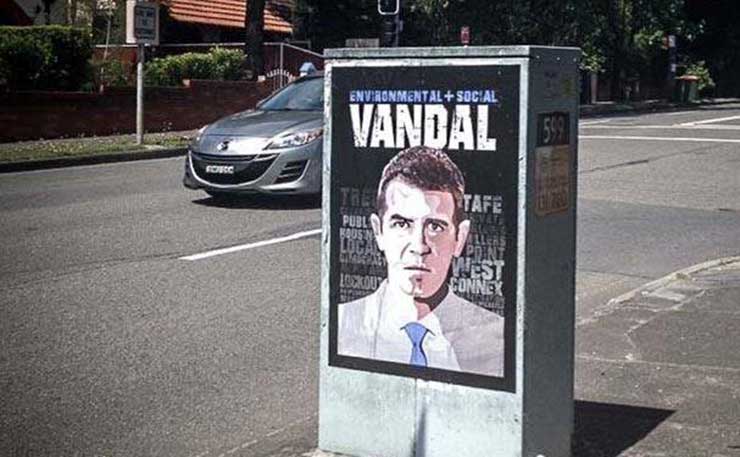
While environmental battles will always have a local dimension, campaigns works best when people and groups are linked.
Hundreds have supported a protest camp in Sydney Park, the only major park in this region of Sydney where more, not less, open space is needed for thousands of new residents moving into new wall-to-wall apartment blocks.
The protest camp, which aims to stop the St Peters Interchange and damage to the Park, is now in its eighth week. It is maintained 24/7 by community members aged from 7 to 75 including students, retail and hospitality workers, accountants, archivists, journalists, academics, engineers, teachers, an animal rescue expert, homeless people, housing activists, photographers, housing policy experts, social workers, marketers, counsellors, nurses, lawyers and members of the grey army that are using their official retirement to support community grassroots action.
Supported by the newly elected City of Sydney we recently scored a rare reprieve for trees on Sydney Park that Westconnex contractors planned to chop down.
There is a good twist to the arrest story. When we returned to protest early on Monday, we unexpectedly found that three young women were on the street with a large banner “Westconnex drilling here”.
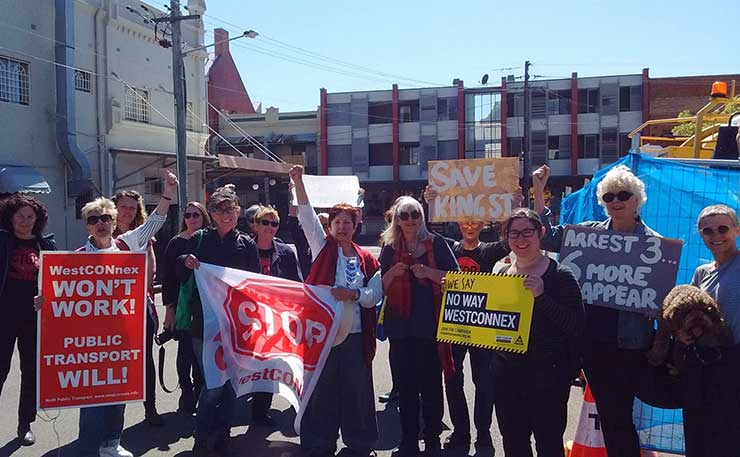
Later I heard that they had been holding the sign in King Street Newtown over the weekend. They are also part of the Sydney Park Camp protest.
Those of us who are older continue to protest. But so too will a younger generation that values our city.
Donate To New Matilda
New Matilda is a small, independent media outlet. We survive through reader contributions, and never losing a lawsuit. If you got something from this article, giving something back helps us to continue speaking truth to power. Every little bit counts.

